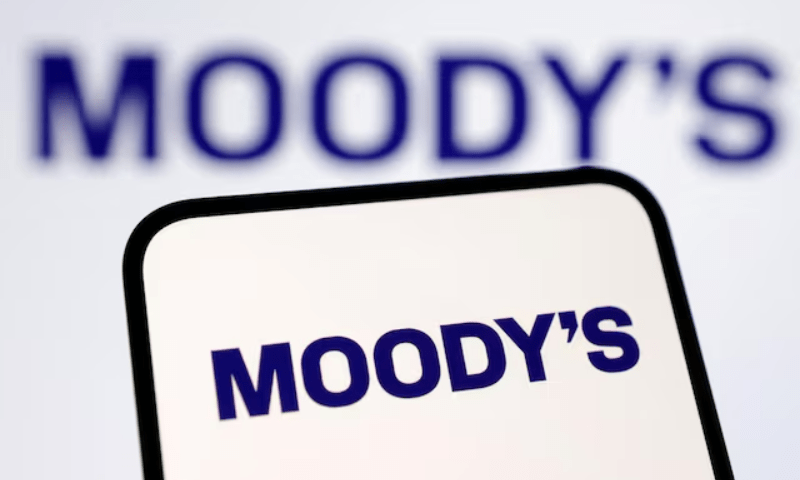
Global rating agency Moody’s on Wednesday upgraded Pakistan’s credit rating by one notch to Caa1 from Caa2, citing Islamabad’s improving external position, and changed its outlook from positive to stable.
Moody’s Ratings is a credit rating system that evaluates the creditworthiness of borrowers, such as governments, corporations, or financial instruments. According to its website, the agency uses letter grades (Aaa, Aa, A, Baa, etc) to indicate the likelihood of timely repayment, with Aaa being the highest quality and C the lowest. These ratings help investors assess risk before lending or investing.
Within this scale, Caa1, Caa2, and Caa3 all fall into the “Caa” category, signalling very high credit risk and poor standing. Caa1 is the highest within this group (slightly less risky), Caa2 is one notch lower, and Caa3 is the last, meaning the greatest vulnerability to default among the three.
“Moody’s Ratings (Moody’s) has today upgraded the Government of Pakistan’s local and foreign currency issuer and senior unsecured debt ratings to Caa1 from Caa2,” the international rating agency — one of the top three global rating firms — said in its statement today.
It cited Islamabad’s improving external position and changed the outlook to Pakistan’s rating to “stable” from positive.
“We have also upgraded the rating for the senior unsecured [medium-term note] programme to (P)Caa1 from (P)Caa2,” it said.
“The upgrade to Caa1 reflects Pakistan’s improving external position, supported by its progress in reform implementation under the [International Monetary Fund’s Extended Fund Facility (EFF) programme,” Moody’s highlighted.
“The Caa1 rating also incorporates the country’s weak governance and high political uncertainty,” the agency noted.
“Foreign exchange reserves are likely to continue to improve, although Pakistan will remain dependent on timely financing from official partners,” it forecasted.
Moody’s went on to highlight that the “sovereign’s fiscal position is also strengthening from very weak levels, supported by an expanding tax base”. “Its debt affordability has improved, but remains one of the weakest among rated sovereigns,” it noted.
Expanding upon the “stable” outlook, the agency said it reflected “balanced risks to Pakistan’s credit profile”.
“On the upside, improvements in the debt service burden and external profile could be more rapid than we currently expect. On the downside, there remains risks of delays in reform implementation required to secure timely official financing, which would in turn weaken Pakistan’s external position again,” it noted.
“The upgrade to Caa1 from Caa2 rating also applies to the backed foreign currency senior unsecured ratings for The Pakistan Global Sukuk Programme Co Ltd,” Moody’s said.
Finance Minister Muhammad Aurangzeb already urged Moody’s in July to improve Pakistan’s current Caa2 credit rating during a virtual engagement in July.
Speaking at an event in Islamabad earlier today, Aurangzeb pointed out that international financial institutions had hailed Pakistan’s economic reforms and said he was hopeful of “the third agency” — an apparent reference to Moody’s — doing the same soon.
Pakistan has been postponing the launch of international bonds since July 2021 due to challenging macroeconomic conditions and resultant poor credit rating, and relying mostly on time deposits from friendly nations to meet external liabilities and stay afloat.
The agency had last upgraded Pakistan’s local and foreign currency issuer and senior unsecured debt ratings to Caa2 from Caa3 on Aug 28, 2024. It had also changed its outlook to positive from stable for improving macroeconomic conditions.
In late February 2024 — shortly after the general elections — Moody’s had retained Pakistan’s long-term credit rating at Caa3, noting that “political risks are high, following a highly controversial general election”.
More to follow
